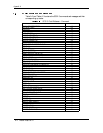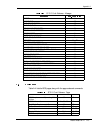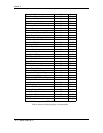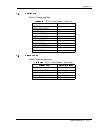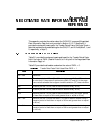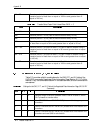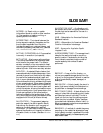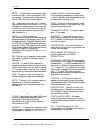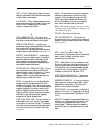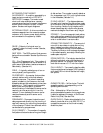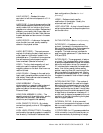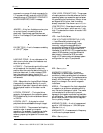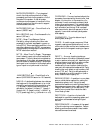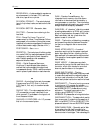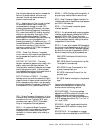
Glossary
G-2 Maxtor Atlas 10K III 18/36/73 GB Ultra160 SCSI
BEZEL – A plastic panel that extends the face
of a drive so that it covers a computer’s drive
bay opening. The bezel usually contains a drive-
activity LED. Also known as the faceplate.
BIT – Abbreviation for binary digit. A binary
digit may have one of two values—1 or 0. This
contrasts with a decimal digit, which may have
a value from 0 to 9. A bit is one of the logic 1or
logic 0 binary settings that make up a byte of
data. (See also
byte.)
BLOCK – In UNIX workstation
environments, the smallest contiguous area that
can be allocated for the storage of data. UNIX
blocks are generally 8 Kbytes (16 sectors) in size.
In DOS environments, the block is referred to
as a cluster. (Note: This usage of the term block
at the operating system level is different from its
meaning in relation to the physical
configuration of the hard drive. See
sector for
comparison.)
BPI – Bits Per Inch. A measure of how densely
information is packed on a storage medium.
(See also
FCI.)
BUFFER – An area of RAM reserved for
temporary storage of data that is waiting to be
sent to a device that is not yet ready to receive
it. The data is usually on its way to or from the
hard disk drive or some other peripheral device.
BUS – The part of a chip, circuit board, or
interface designed to send and receive data.
BYTE – The basic unit of computer memory,
large enough to hold one character of
alphanumeric data. Comprised of eight bits.
(See also
bit.)
CACHE – Specialized High-speed RAM used
to optimize data transfers between system
elements with different performance
characteristics, e.g., disk to main memory or
main memory to CPU.
CAPACITY – The amount of information that
can be stored on a hard drive. Also known as
storage capacity. (See also
formatted capacity.)
CLEAN ROOM – An environmentally
controlled dust-free assembly or repair facility
in which hard disk drives are assembled or can
be opened for internal servicing.
CMOS – Acronym for complementary metal
oxide semiconductor. A low-power, low-heat,
high-density semiconductor.
COMMAND QUEUE – The queue used to
store I/O processes.
CONNECT – The initiator function that
selects a target to establish a nexus and to start
an I/O process. The connection that results is
an initial connection.
CONNECTION – An initial connection or
reconnection that can occur only between one
initiator and one target.
CONTINGENT ALLEGIANCE – A
condition generated by a CHECK
CONDITION or
COMMAND TERMINATED status during
which execution of all tagged I/O processes (for
the associated I_T_X nexus) are suspended until
the condition is cleared. A target preserves an
I_T_X nexus until it is cleared by a hard or soft
reset, an abort message or another command for
that I_T_X nexus. While the contingent
allegiance condition exists, the target maintains
sense data for the initiator.
CLUSTER – In DOS environments, the
smallest contiguous area that can be allocated
for the storage of data. DOS clusters are usually
2 Kbytes (4 sectors) in size.
CONTROLLER – The chip or circuit that
translates computer data and commands into a
form suitable for use by the hard drive. Also
known as disk controller.
CONTROLLER CARD – An adapter
containing the control electronics for one or
more hard disks. Usually installed in a slot in the
computer.
CPU – Central Processing Unit. The
microprocessor chip that performs the bulk of
data processing in a computer.



